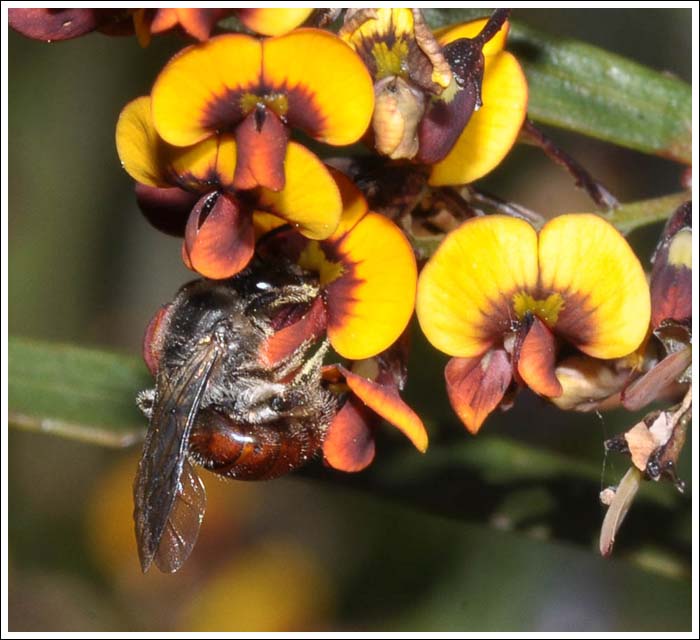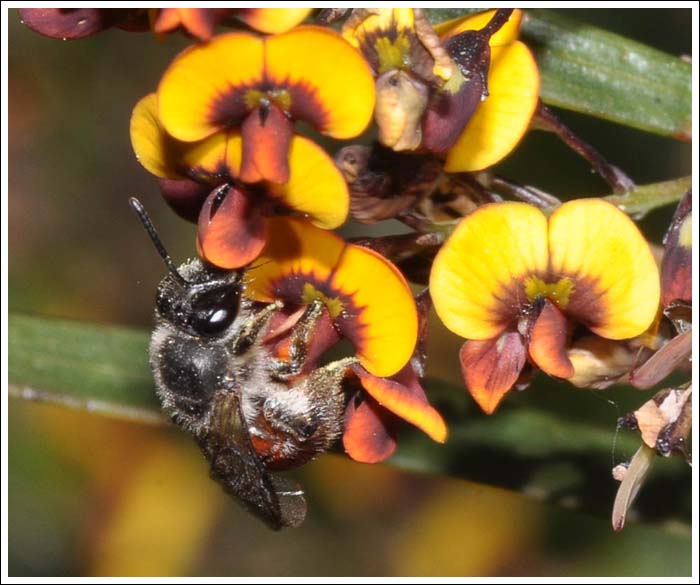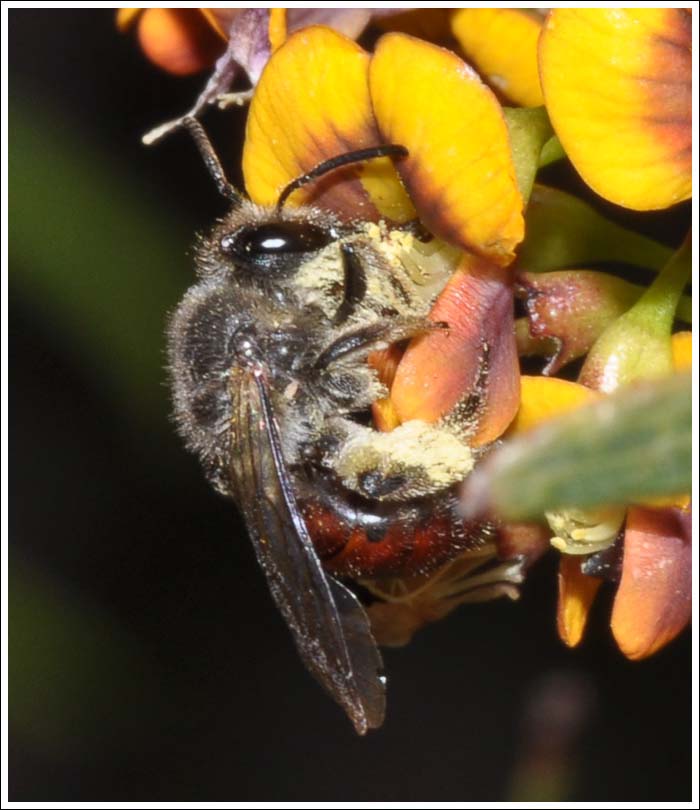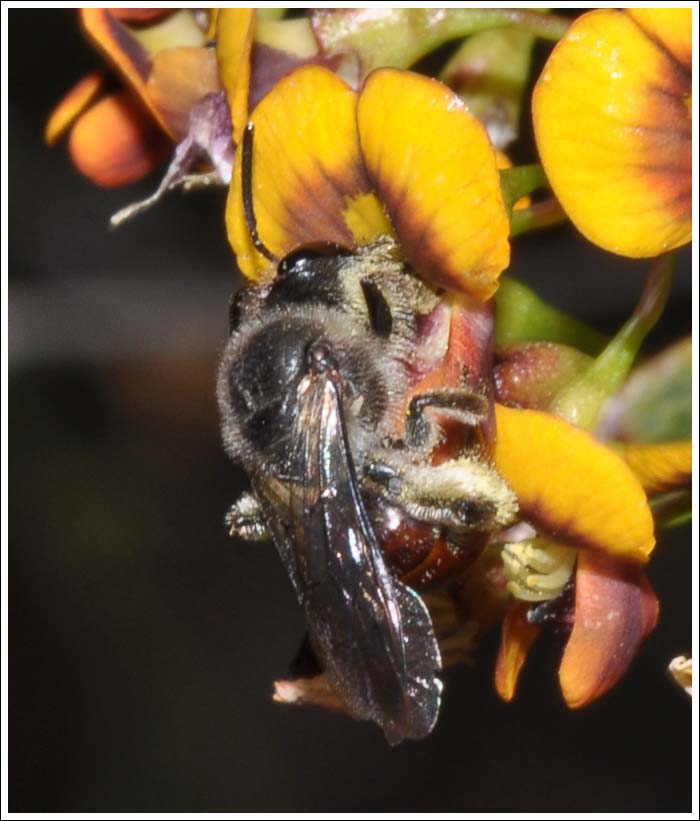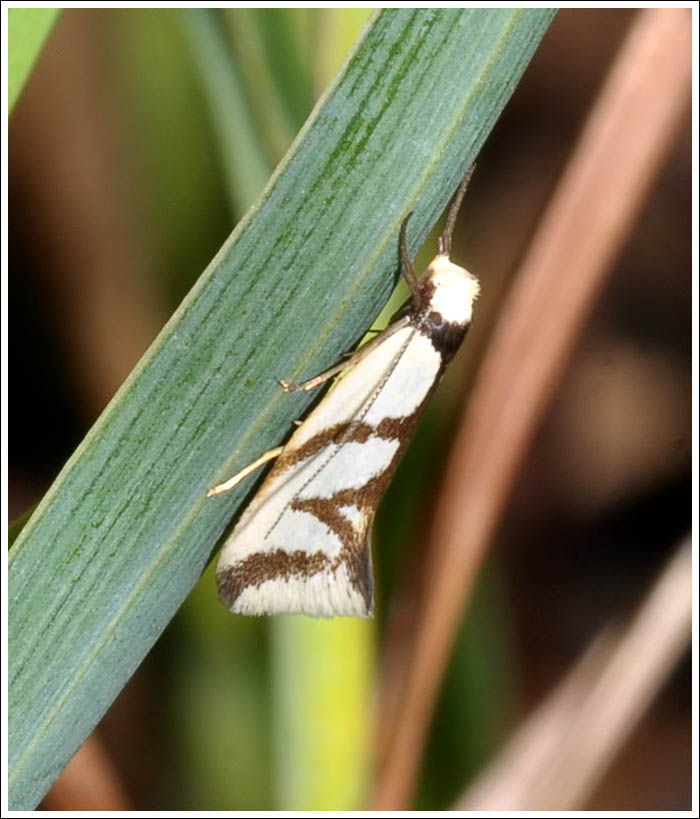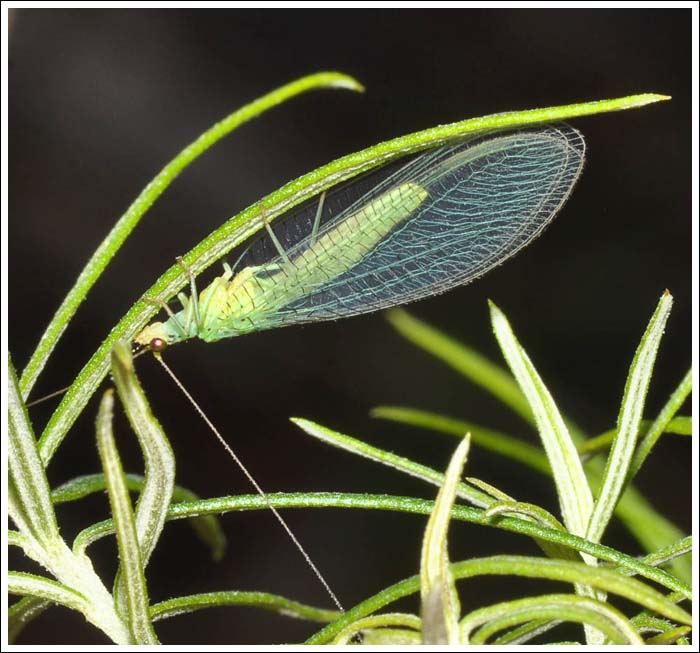This post follows one published five years ago, subsequently a wide firebreak was bulldozed beside the track clearing all the low vegetation that supported such a diverse range of insects. Since then regeneration has been good, with the Goodenia ovata and Daviesia leptophylla again flourishing and flowering, inviting another look to check the insect life.
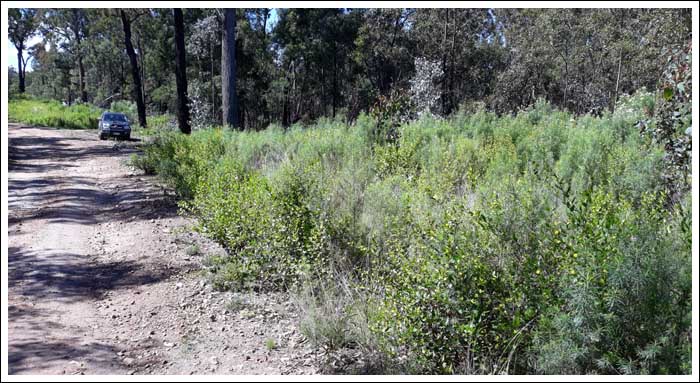
While looking at the Goodenias it was apparent that many plants had Dodder Laurel, Cassytha species twining around them, something not noticed previously. Two or three butterflies in the Lycaenidae family were seen flitting among the Goodenias, and despite the persistent breeze that made close up photography difficult, several shots were obtained. They were unfamiliar, and on returning home, Charles McCubbin’s wonderful book revealed they were the Blotched Dusky-blue, Candalides acasta. The larvae feed on Cassytha, hence the activity, the first shot shows one on a Cassytha tendril.
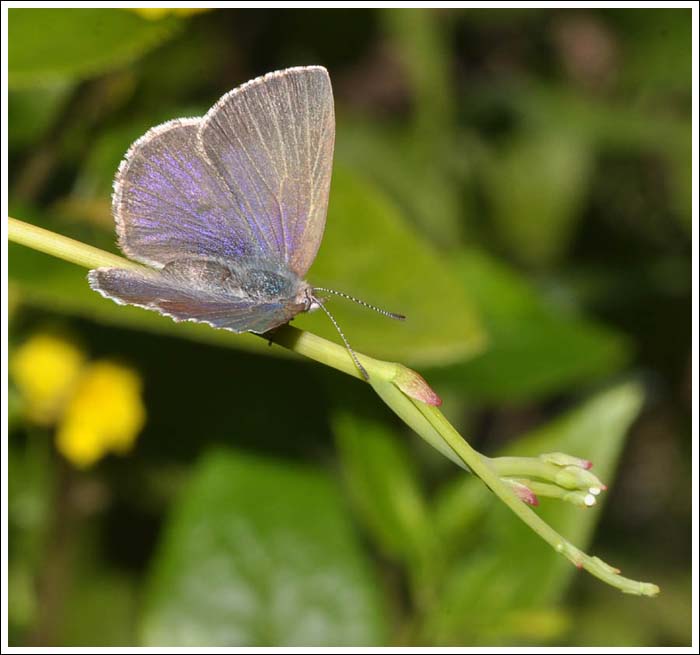
Nectaring on Daviesia, click to enlarge.
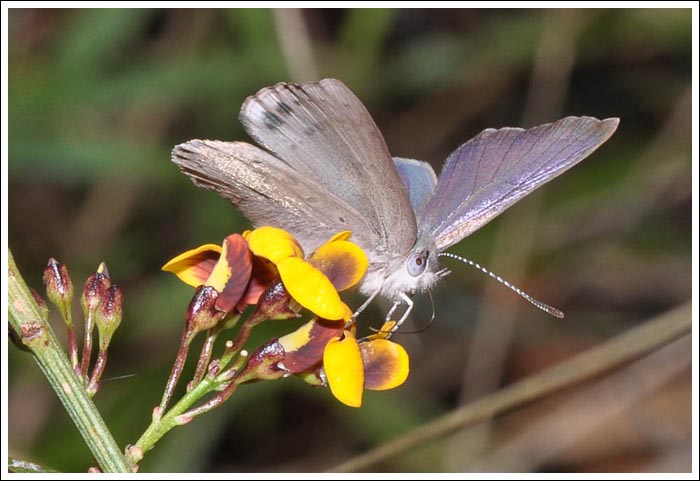
Showing wing under surface.
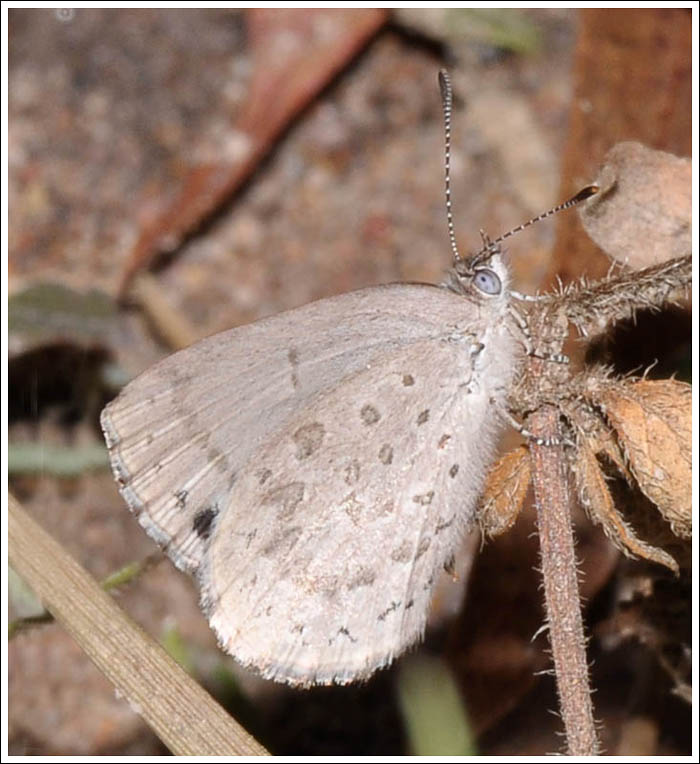
Interestingly, the only insects noticed working on the Goodenia flowers were honey bees, the native insects were only observed on the Daviesia flowers.
Mating Stiletto Flies, genus Ectinorhynchus, click to enlarge.

The female is on the right with the orange abdomen.

A beefly, family Bombyliinae, genus Sisyromyia, click to enlarge.
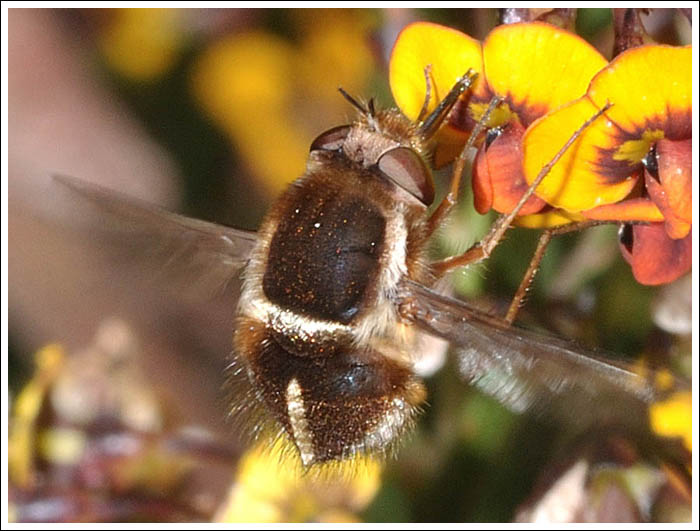
To be continued.

